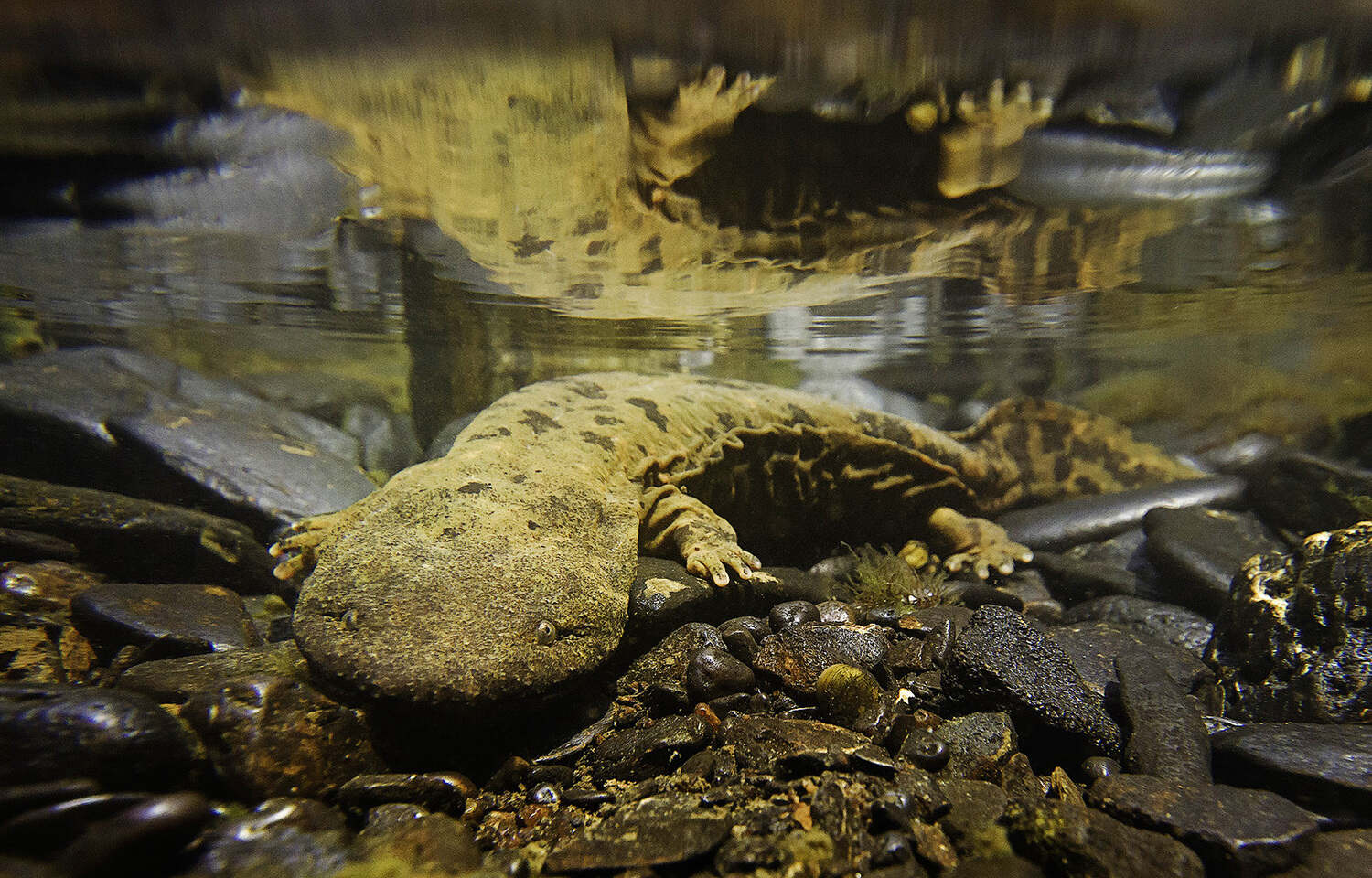
What is a Hellbender? This giant salamander, often called a "snot otter" or "lasagna lizard," is one of the largest amphibians in North America. Hellbenders can grow up to 29 inches long and live in clean, fast-flowing streams and rivers. These fascinating creatures have wrinkly skin that helps them breathe underwater. They are nocturnal hunters, feasting on crayfish, insects, and small fish. Despite their fearsome name, hellbenders are harmless to humans. Sadly, their populations are declining due to habitat loss, pollution, and disease. Conservation efforts are crucial to protect these unique amphibians and their freshwater homes. Dive into these 25 facts to learn more about the mysterious hellbender!
What is a Hellbender?
The hellbender is a fascinating creature that often flies under the radar. This giant salamander, native to North America, has some truly unique characteristics.
-
Largest Salamander in North America
The hellbender can grow up to 29 inches long, making it the largest salamander in North America. -
Also Known as the "Snot Otter"
Due to its slimy skin, the hellbender has earned the nickname "snot otter." -
Lives in Clean, Fast-Flowing Streams
These salamanders thrive in clean, fast-flowing streams and rivers with rocky bottoms. -
Nocturnal Creatures
Hellbenders are nocturnal, meaning they are most active at night. -
Flattened Bodies for Stream Life
Their flattened bodies help them navigate the strong currents of their stream habitats.
Unique Physical Characteristics
Hellbenders possess some unique physical traits that set them apart from other amphibians.
-
Loose, Wrinkled Skin
Their loose, wrinkled skin helps with respiration, allowing them to absorb oxygen directly from the water. -
Tiny Eyes
Hellbenders have small eyes, which are not their primary sense for navigating their environment. -
Powerful Tails
Their tails are muscular and help them swim against strong currents. -
No Lungs
Unlike many amphibians, hellbenders do not have lungs; they rely entirely on their skin for breathing. -
Cryptic Coloration
Their mottled brown and gray skin helps them blend in with the rocky stream beds.
Diet and Hunting
Hellbenders have a specific diet and unique hunting methods that are fascinating to learn about.
-
Carnivorous Diet
They primarily eat crayfish, but will also consume small fish, insects, and other aquatic organisms. -
Ambush Predators
Hellbenders are ambush predators, lying in wait for prey to come close before striking. -
Suction Feeding
They use a method called suction feeding, where they rapidly open their mouths to suck in water and prey. -
Sensitive to Vibrations
Hellbenders can detect vibrations in the water, helping them locate prey even in the dark. -
Slow Metabolism
Their slow metabolism allows them to go for long periods without eating.
Reproduction and Lifespan
The reproductive habits and lifespan of hellbenders are as unique as the creatures themselves.
-
External Fertilization
Hellbenders reproduce through external fertilization, where the female lays eggs and the male fertilizes them outside her body. -
Nesting Sites
Males create nesting sites under large rocks where females can lay their eggs. -
Guarding the Eggs
Males guard the eggs until they hatch, which can take up to two months. -
Long Lifespan
Hellbenders can live up to 30 years in the wild, and even longer in captivity. -
Late Maturity
They reach sexual maturity around the age of 5 to 8 years.
Conservation Status
Hellbenders face several threats that have led to their decline in many areas.
-
Habitat Destruction
Pollution and habitat destruction are major threats to hellbender populations. -
Sensitive to Water Quality
Because they rely on clean, oxygen-rich water, hellbenders are very sensitive to changes in water quality. -
Illegal Collection
Some populations are threatened by illegal collection for the pet trade. -
Conservation Efforts
Various conservation efforts are underway, including habitat restoration and breeding programs. -
Protected Species
In many states, hellbenders are a protected species, making it illegal to capture or harm them.
The Final Word on Hellbenders
Hellbenders are fascinating creatures with unique traits. These giant salamanders, found in North America, play a crucial role in their ecosystems. Their wrinkly skin helps them breathe underwater, and they can grow up to 29 inches long. Despite their size, they’re quite elusive, often hiding under rocks in fast-flowing streams.
Sadly, hellbenders face threats from habitat destruction, pollution, and climate change. Conservation efforts are vital to protect these ancient amphibians. By preserving their habitats and reducing pollution, we can help ensure their survival.
Learning about hellbenders not only sparks curiosity but also highlights the importance of biodiversity. These creatures remind us of the delicate balance in nature and our role in maintaining it. So next time you’re near a stream, think of the hellbender and the hidden wonders beneath the surface.
Was this page helpful?
Our commitment to delivering trustworthy and engaging content is at the heart of what we do. Each fact on our site is contributed by real users like you, bringing a wealth of diverse insights and information. To ensure the highest standards of accuracy and reliability, our dedicated editors meticulously review each submission. This process guarantees that the facts we share are not only fascinating but also credible. Trust in our commitment to quality and authenticity as you explore and learn with us.
